28 April 2020
Calendar of blooms
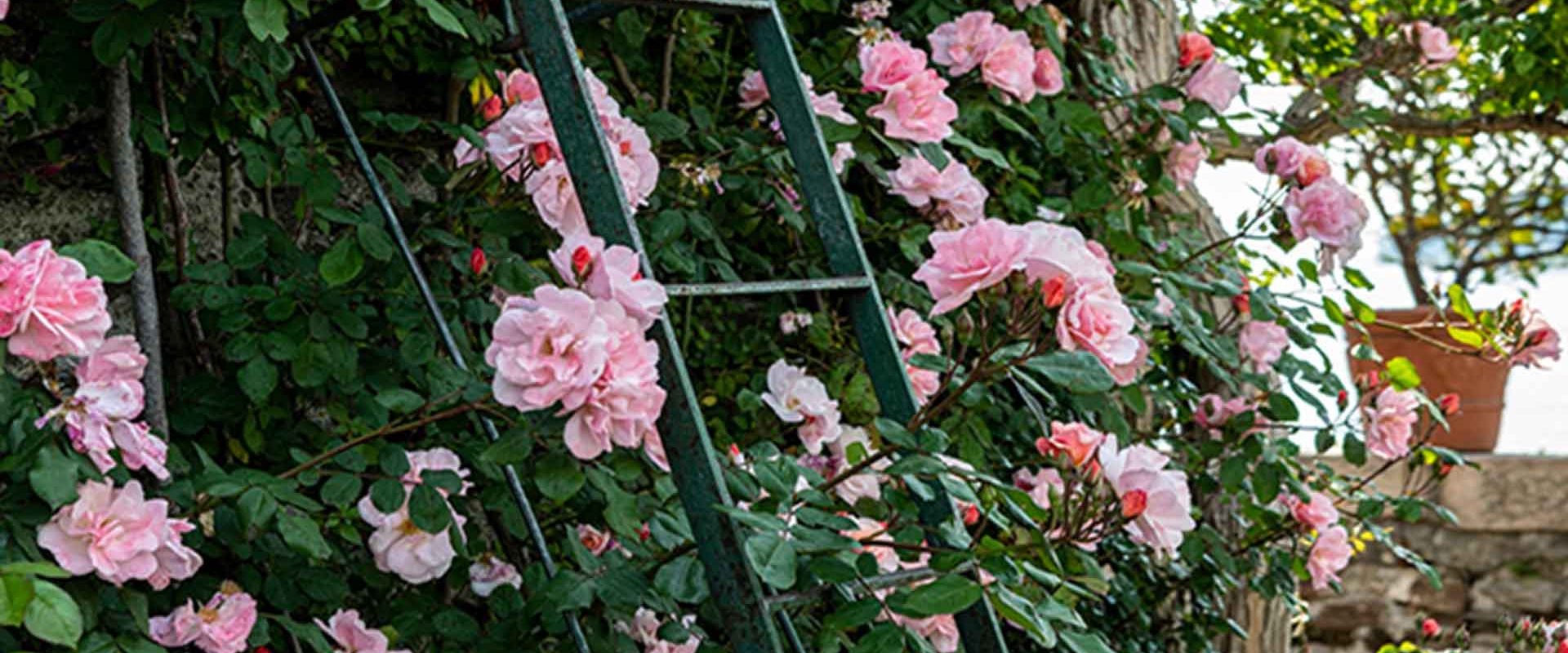
The calendar of blooms at Terre Borromeo is always full of dates to put in your diary: almost weekly the botanical riches that embellish the gardens of Isola Bella, Isola Madre, Rocca di Angera and Parco Pallavicino provide captivating new experiences characterised by bright colours and enchanting perfumes.
Isola Madre
In the botanical garden of the largest island on the Borromeo archipelago, various exotic blooms take the stage, with plants and flowers coming from every part of the world. Many arrived here at the wishes of Vitaliano IX, who was a great botany enthusiast.
Rhododendrons and azaleas
Two important collections in the garden of Isola Madre are those of the rhododendrons and the azaleas, which can be seen in the areas of the Prato dei Gobbi and the Gynerium. Very rare specimens thrive here, and their flowering can be observed in April (for the rhododendrons) and until May (for the azaleas).
Magnolias
A wood of magnolia grandiflora flourishes in the Piazzale dei Pappagalli in the month of April, but many rare specimens of the same species are blossoming all over the English-style garden. The magnolia is an evergreen tree that stands majestically with its thirty metres of height and in summer big white cupped flowers, scented with lemon, grow among its shiny, leathery leaves.
Wisteria
Around 18 species coming from the USA, China and Japan bloom in April and May along the avenues of Isola Madre, making up what is one of the oldest collections of wisteria in Italy. From their white, lilac and violet clusters they emit an intense, intoxicating perfume. The arch they create above the Scala dei Glicini captivates the gaze with an amazing scenic effect.
Roses
Spread out around a number of corners of the garden spreading their sweet perfume, they bloom in May and June, entrancing the gaze with their charm like actual queens.
Cacti
They bloom in June and the best point of observation of the terrace where they can be admired, perched up along with the aloe and prickly pears, is from the lake.
Terrazza delle protee
The protea plant has a history of no less than 95 million years. Its highly unusual prehistoric flowers are the symbol of South Africa and blossom from March to July. The collection of Isola Madre is a real rarity.
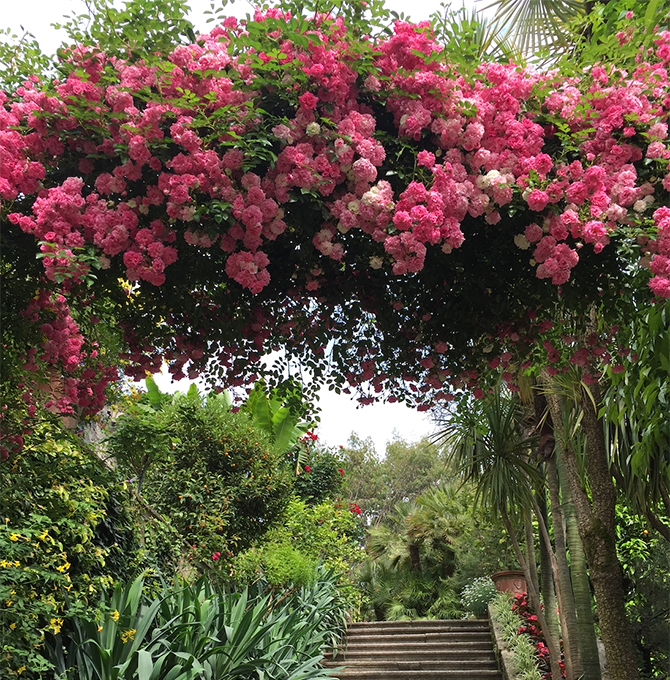
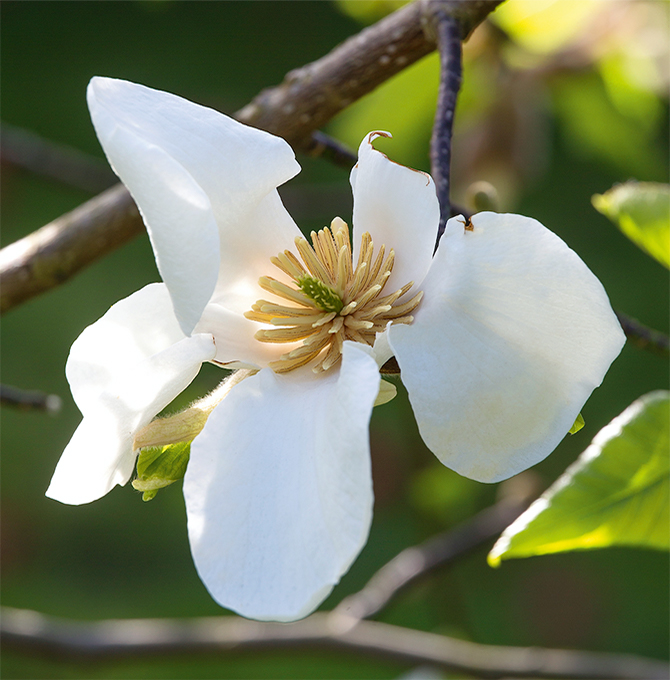
Isola Bella
In the Baroque Italian-style garden, the flowerbeds form geometries and embroidery patterns in the parterres and avenues, where espaliers of cedars, lemons and oranges fill the air with Mediterranean notes.
The rose terrace
An unmissable appointment for lovers of botanical species, the terrace of roses in bloom is a unique event that brightens up the espalier of the central terrace of the garden of Isola Bella with pink and red. In the blossoming periods, in the months of May and June, this romantic corner becomes very visible both from the lake and from dry land. Here you can stroll around admiring the large expanse of the Golfo Borromeo with the marvellous climbing roses behind you, including in particular the varieties Blaze, with its cherry red colour, and Claire Matin with its peach pink tones. The corollas of the Blaze rose can be round or cupped and generally grow in small bunches composed of three to ten flowers; the Claire Matin has buds with a coral pink tone that first become salmon pink when they open and finally peach pink.
Parterre of Azaleas
This level was originally called the “Garden of San Rocco”, since it housed an oratory dedicated to the saint. Today the area is renowned for its extraordinary flowering of white azaleas and fuchsias during the months of April and May.
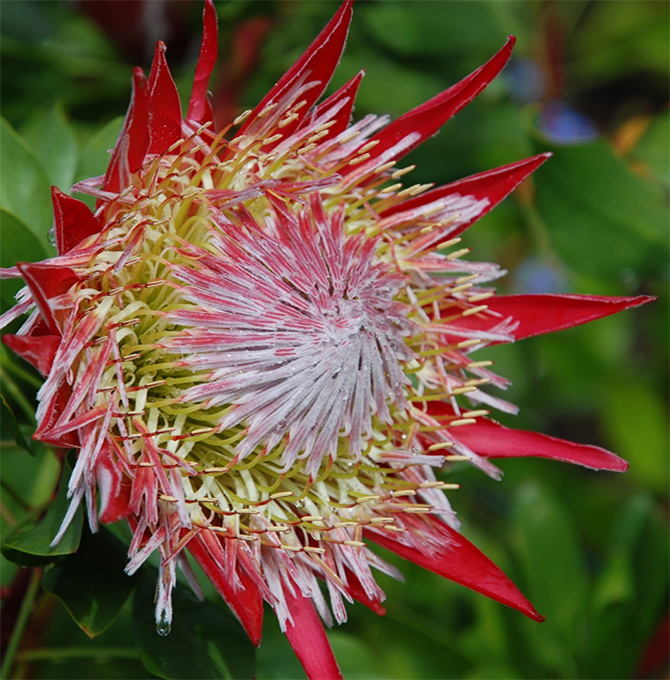
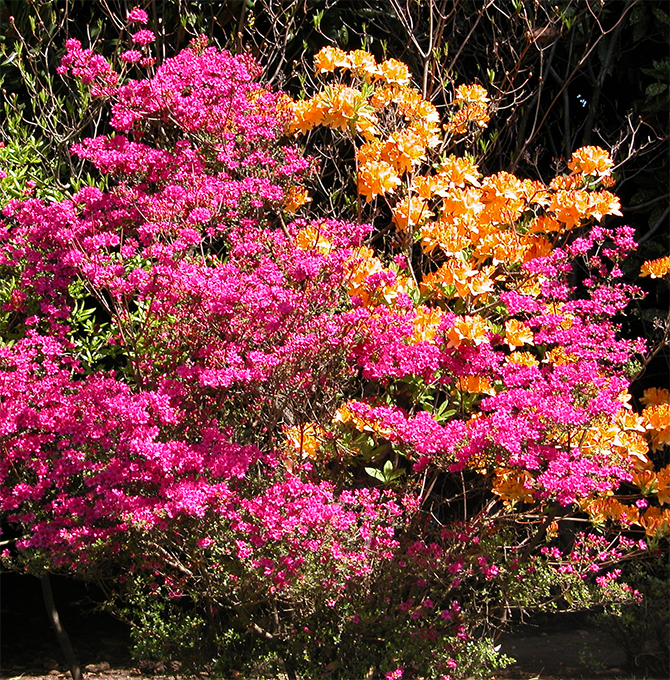
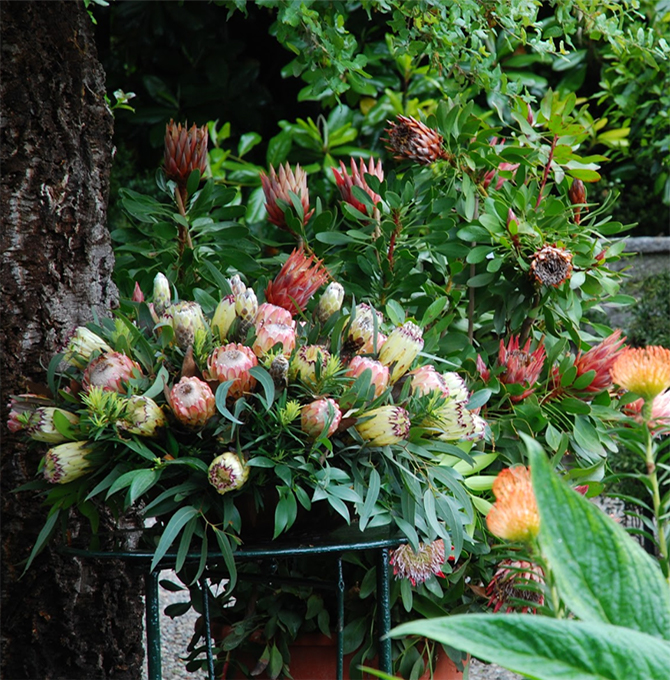
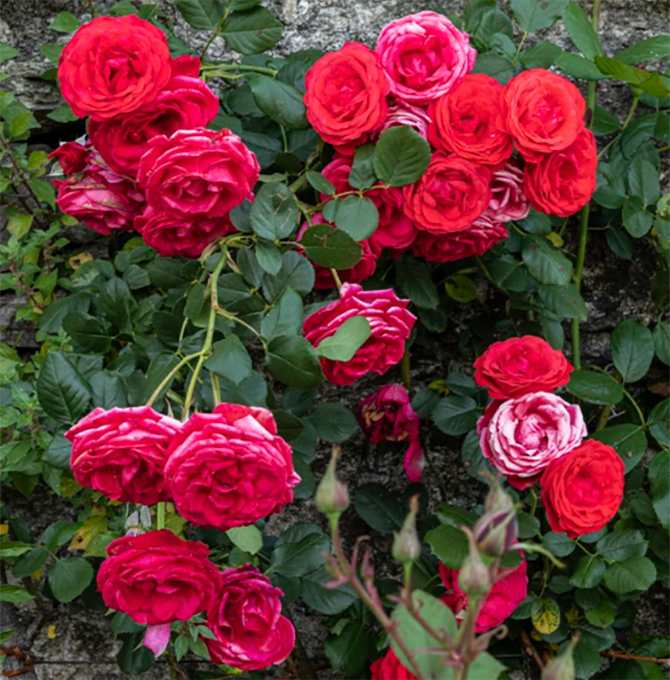
Rocca di Angera – the medieval garden
A small flowery paradise, suspended in time, the garden of the Rocca di Angera plays host to various significant blossomings: in the months of March and April hyacinths and fritillaries appear in the meadow. In May it is the Giardino dei Principi that enchants us with its varieties of roses, lilies, peonies, primroses, violets and irises
The rose garden
Among the oldest collections of roses in Italy, this pergola hosts certain unusual species: among these, the Rosa Gallica officinalis and the Alba Maxima bear witness to the botanical traditions of the past. Gallica Officinalis was probably brought to Europe from Asia Minor and in the Middle Ages was cultivated in monasteries for medicinal purposes and for the preparation of perfumes and preserves. Its flowers are strongly perfumed, large, semi-double, crimson red in colour, with golden stamens.
Alba Maxima, on the other hand, is a semi-double white rose with an intense perfume, the buds of which are slightly pink-shaded when they open up. It has a single flowering in spring and seems to derive from the Rosa gallica.
Also present are botanical and damask roses, which offer visitors continuous and generous blooms during the whole summer season. Among these, it is worthwhile mentioning Alba Plena, a hybrid of the Rosa banksiae, which, like the latter, is characterised by double white flowers.
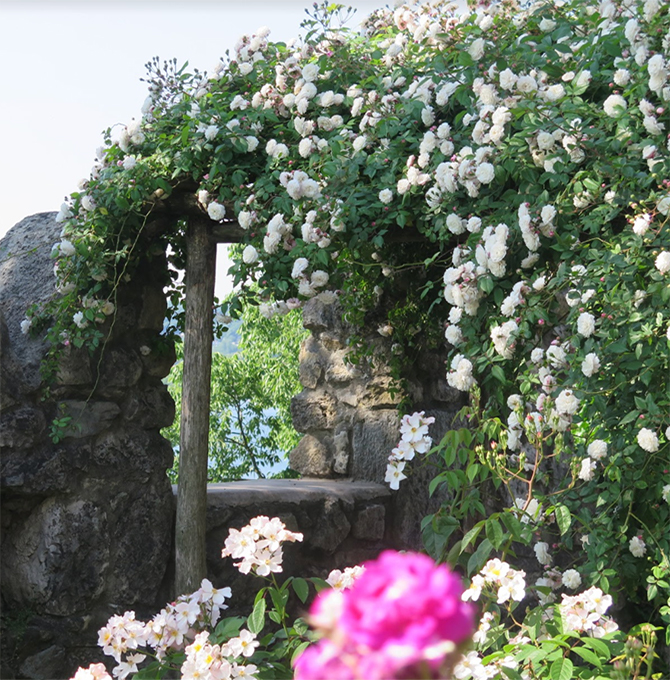
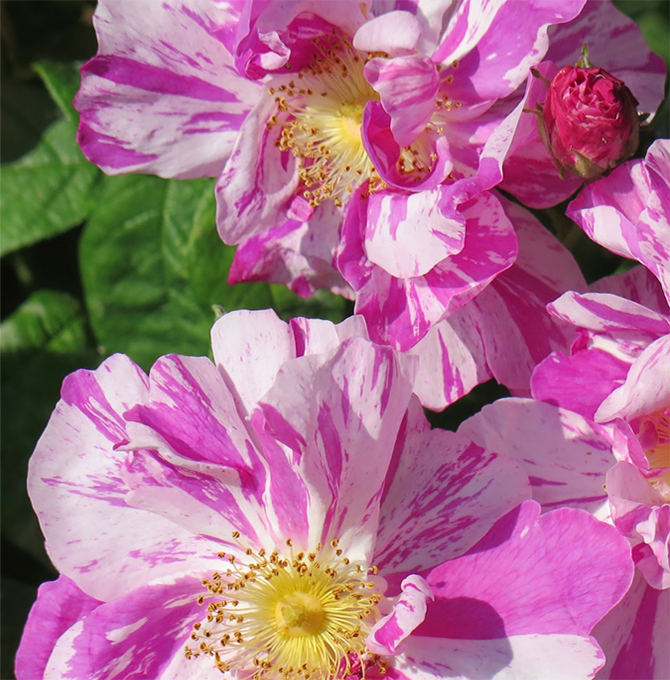
La Gallica Officinalis venne portata in Europa probabilmente dall’Asia minore e nel Medioevo veniva coltivata nei monasteri per scopi medicinali e per la preparazione di profumi e conserve. I suoi fiori sono molto profumati, grandi, semidoppi di colore rosso cremisi, con stami dorati.
L’Alba Maxima è invece una rosa bianca semidoppia e dal profumo intenso, i cui boccioli sono leggermente sfumati di rosa allo schiudersi. Ha un’unica fioritura primaverile e sembra derivi dalla rosa gallica.
Sono presenti anche Rose botaniche e damascene che offrono ai visitatori una fioritura continua e generosa durante l’intera stagione estiva. Tra queste vale la pena ricordare l’Alba Plena, un ibrido della Banksiae che come questa è caratterizzata da fiori bianchi doppi.
In the months of April and May the Garden of Small Herbs gives new flowerings of medicinal herbs, dye-house herbs and other commonly used ones. Gathered together and divided up into groups inside 12 large cases according to their specific medicinal functions, their flowering and growth reminds everyone of their value and benefits. Sometimes neglected and forgotten, today they are being re-evaluated both for their usefulness and for their splendid perfumes and colours. In April the blossoming of the apple tree is also not to be missed.
Parco Pallavicino
The great wonder of this park is its trees, with centuries-old chestnuts and huge tulip trees (among the oldest in Italy), red beech trees, maples, larches, ginkgo bilobas, redwoods and magnolias. However, there is no shortage of blossoming flowers here too. Along the avenues of the Park, camellias, hydrangeas and rhododendrons bloom in March, April, May and during the summer respectively.
The Flower Garden
In April tulips and violets are the protagonists of the garden, until May, when they leave centre stage to make way for an explosion of blooms in the rose garden that has adorned the Park since the mid-20th century. Very striking on account of the many colour tones of the various blooms, it starts to blossom in May and, thanks to the climate, maintains its beauty throughout the summer.
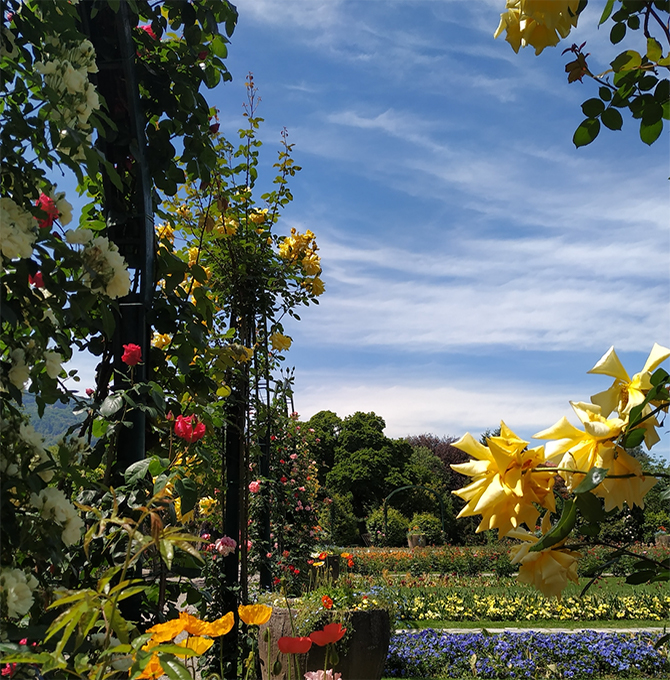
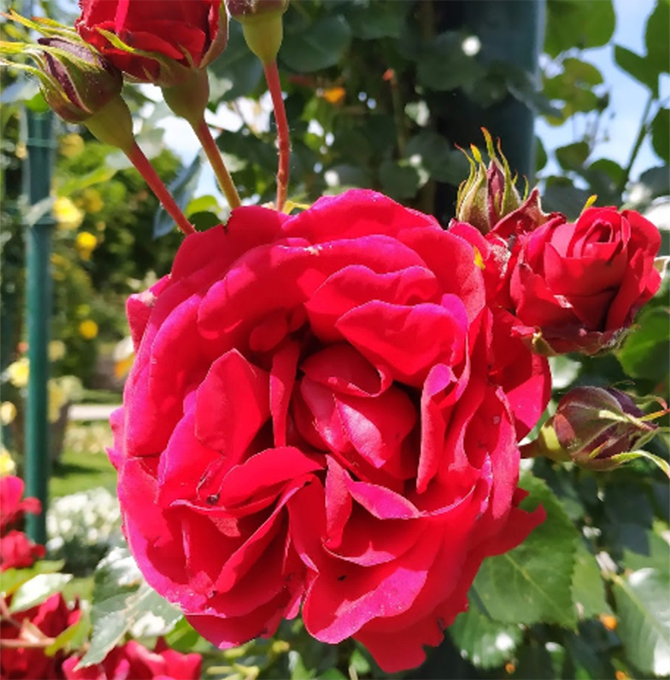






![Le previsioni per il prossimo weekend danno bel tempo!
.
Programmate una giornata all'Isola Bella: dopo la visita di Palazzo Borromeo con i suoi giardini, la terrazza del bistrot Fornello Bottega con Cucina è quello che ci vuole per un pranzo open-air vista lago, a base di prelibatezze italiane.
.
.
.
The weather forecast for next weekend is looking good!
.
It’s time to plan your day at Isola Bella. After visiting Palazzo Borromeo [Borromeo Palace] with its gardens; the terrace of the Fornello Bottega bistro and kitchen is the perfect place for an open-air lunch overlooking the lake. Here you can sample a range of Italian delicacies.
#terreborromeo #lakemaggiore #lagomaggiore #borromeoexperience #stresa #isolabella #gourmet #italianrestaurant](https://borromee.vivastaging.com/wp-content/plugins/instagram-feed-pro/img/placeholder.png)